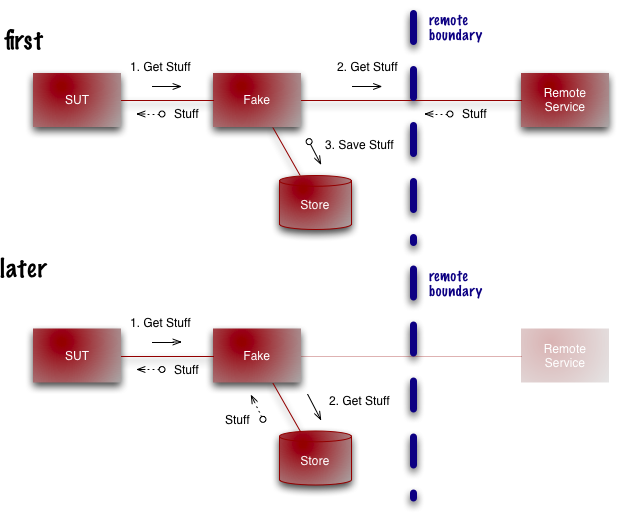Self Initializing Fake
4 August 2009
One of the classic cases for using a TestDouble is when you call a remote service. Remote services are usually slow and often unreliable, so using a double is a good way to make your tests faster and more stable.
When you're querying a remote service, you need to find a way to load the expected data into your double. One way to do this is to use what I'm dubbing a self-initializing fake. The basic plan is simple. The first time you call the fake it passes the call onto the actual remote service, and as it returns the data it takes and saves a copy. Further calls just return the copy. In a sense this is like a cache, but with the important difference that there is no attempt to handle cache invalidation, which is handy as that's one of the TwoHardThings.

I've called this a fake, as that seems the closest fit from the various varieties of test doubles. The other reasonable alternative is a stub, but the distinction here is that a stub needs setting up when you build the fixture, while fakes are autonomous.
The interesting thing about a self-initializing fake is how you deal with situations where the remote service changes its response.
One time I saw this approach was with a database controlled by another application. In this case the data did change, frequently. This is unhelpful for tests, because automated tests rely on getting the same answers to the same questions. But usually tests don't care whether the data is up to date or not, so saving an old value worked just fine.
I ran into this again recently while chatting with my colleague Josh Price. In his case the remote data was supposedly static, but occasionally there were changes, which would imply that the system he was developing needed to change - usually to handle formatting issues. In this case he had a special test suite that would get all self-initializing fakes to call the remote service and check that they returned the same value that was saved.
In this case early stages of their build pipeline ran against the fake, and the last (slowest) stage ran against the service itself. One interesting problem was that the remote service required some unimportant parameters which changed from call to call but didn't alter the results. These were stripped out of the URL when the fake looked the values up from the store.
(Thanks to Josh Price, Darren Cotterill, and Gerard Meszaros for their help with this piece.)

